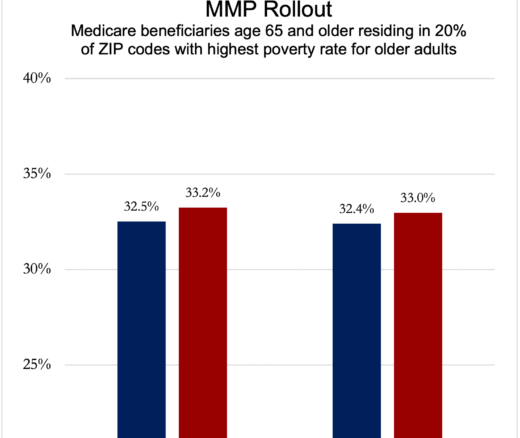
Acupuncture Could Fix America’s Chronic Pain Crisis–So Why Can’t Patients Get It?
A Proven, Low-Risk Treatment Is Backed by Major Studies and Patient Demand, Yet Medicare and Insurers Still Make It Hard To Use
Health Care Access & Coverage | Health Equity
Blog Post
About 1.2 million people in the U.S. have HIV, and in 2021 about 32,000 were newly infected. These numbers should be lower. Pre-Exposure Prophylaxis (PrEP) medication prevents HIV transmission and has been available since 2012. Yet, more than a decade later and despite Affordable Care Act (ACA)-mandated coverage for it, access to PrEP is inequitable, especially among gender-diverse and transgender populations.
How can access to PrEP be improved among this population, especially for transmasculine and nonbinary individuals who are underrepresented in research on the topic? A team led by LDI Associate Fellow Dovie Watson and that included LDI Senior Fellows Florence Momplaisir and José Bauermeister set out to answer this question in a new study. They surveyed a national sample of 304 trans individuals (including about half of whom identified as transmasculine) to measure the knowledge and use of PrEP, assess five PrEP program attributes, and determine which of these attributes are considered the most important.

One-fifth of respondents reported prior or current PrEP use although most PrEP-naïve respondents reported an awareness of PrEP. Among participants, no out-of-pocket cost was by far the most attractive factor in decision-making regarding PrEP programs, followed by the bundling of PrEP-related care with gender-affirming hormone therapy (GAHT) services, shorter travel time (25 minutes versus 60 minutes), pharmacies as a dispensing venue (compared to primary care), and six-month intervals between visits (compared to two months).
We asked Dr. Watson about this important study.
Watson: Ideally, transgender people would be enrolled in substantive numbers at every stage of PrEP product development and PrEP-related research. However, that hasn’t been the case. A major advantage of using conjoint analysis is that this experimental survey technique enables researchers to evaluate which combination of PrEP program features would be most and least preferred in real-world settings among intended end-users—if the features are carefully selected. Ultimately, these findings may inform the optimization of PrEP service delivery by “bundling” services to meet the needs of transgender populations even if transgender individuals were not enrolled in the early clinical trials in substantive numbers.
Watson: We were surprised that PrEP-experienced participants preferred PrEP delivery in primary care settings, while PrEP-naïve participants preferred pharmacies. However, one of the most surprising findings of the study was the fact that participants—regardless of PrEP status—strongly preferred not to receive PrEP from HIV/Sexually Transmitted Infection (STI) clinics. Our findings lend further credence to calls from community stakeholders to diversify PrEP service models and integrate PrEP into settings that are not exclusively focused on HIV/STI care.
Watson: The rates of PrEP awareness and PrEP use among our study population of transgender adults were fairly comparable to those reported in recent Centers for Disease Control and Prevention (CDC) PrEP surveillance reports, so that was less surprising. However, we were surprised that half of the participants reported they had not used gender-affirming hormones as a component of their gender affirmation. The degree to which this was due to personal preference versus structural and systemic barriers to gender-affirming medical care warrants further investigation.
Watson: One strategy would be to integrate PrEP and gender-affirming hormone therapy services into comprehensive primary care services. Regrettably, many transgender adults must navigate interpersonal, structural, and systemic barriers to receive PrEP-related care and gender-affirming hormone therapy within formal medical institutions. This integration would require broader training in trans-inclusive preventive, mental, and sexual health service delivery among general health practitioners, including trainees.
Watson: PrEP equity varies markedly by geographic region, particularly among PrEP-eligible Black and Latine adults of all genders, with the lowest rates of PrEP provision in the Southern region of the U.S. Achieving PrEP equity will require system-level policies (and funding) like Medicaid expansion and a requirement that all private and public insurance plans cover the costs of PrEP-related care, including medication and labs. Furthermore, robust investment in a federally funded national PrEP program that covers PrEP-related care without cost-sharing will be critical to address PrEP inequity in communities where governments are particularly hostile toward LGBTQ+ people—and transgender people specifically.
Watson: Our findings suggest that expanding PrEP service delivery across a variety of dispensing venues outside of HIV/STI-specific silos could be particularly appealing to individuals who have not been successfully engaged in PrEP-related care. As part of its ongoing Ending the HIV Epidemic initiative efforts, the Philadelphia Department of Public Health is evaluating multiple PrEP implementation strategies including telehealth programs and in-person provision at one-stop-shop community-based clinics and pharmacies.
Watson: According to the Trans Legislation Tracker, more bills targeting gender-affirming health care were introduced in the U.S. in 2023 than in the previous five years combined. Achieving PrEP equity for transgender people will require more than defending current federal regulations that require many insurance plans to cover PrEP without cost-sharing. In addition to robust investment in a federally funded national PrEP program, policymakers need to anticipate that transgender people will be targeted for exclusion and proactively develop a national PrEP program to be sustainable and as impervious to anti-trans legislative attacks as possible. Accordingly, community-engaged implementation research conducted with substantive inclusion of transgender community stakeholders will be critical to developing and implementing any national PrEP program.
The study, “HIV Pre-Exposure Prophylaxis Programme Preferences Among Sexually Active HIV-Negative Transgender and Gender Diverse Adults in the United States: A Conjoint Analysis,” was published on February 8, 2024 in the Journal of the International AIDS Society. Authors include Dovie L. Watson, Louis Listerud, Ryan A. Drab, Willey Y. Lin, Florence Marie Momplaisir, and José A. Bauermeister.


A Proven, Low-Risk Treatment Is Backed by Major Studies and Patient Demand, Yet Medicare and Insurers Still Make It Hard To Use

Chart of the Day: Medicare-Medicaid Plans—Created to Streamline Care for Dually Eligible Individuals—Failed to Increase Medicaid Participation in High-Poverty Communities
Research Brief: Shorter Stays in Skilled Nursing Facilities and Less Home Health Didn’t Lead to Worse Outcomes, Pointing to Opportunities for Traditional Medicare

How Threatened Reproductive Rights Pushed More Pennsylvanians Toward Sterilization

Abortion Restrictions Can Backfire, Pushing Families to End Pregnancies

They Reduce Coverage, Not Costs, History Shows. Smarter Incentives Would Encourage the Private Sector